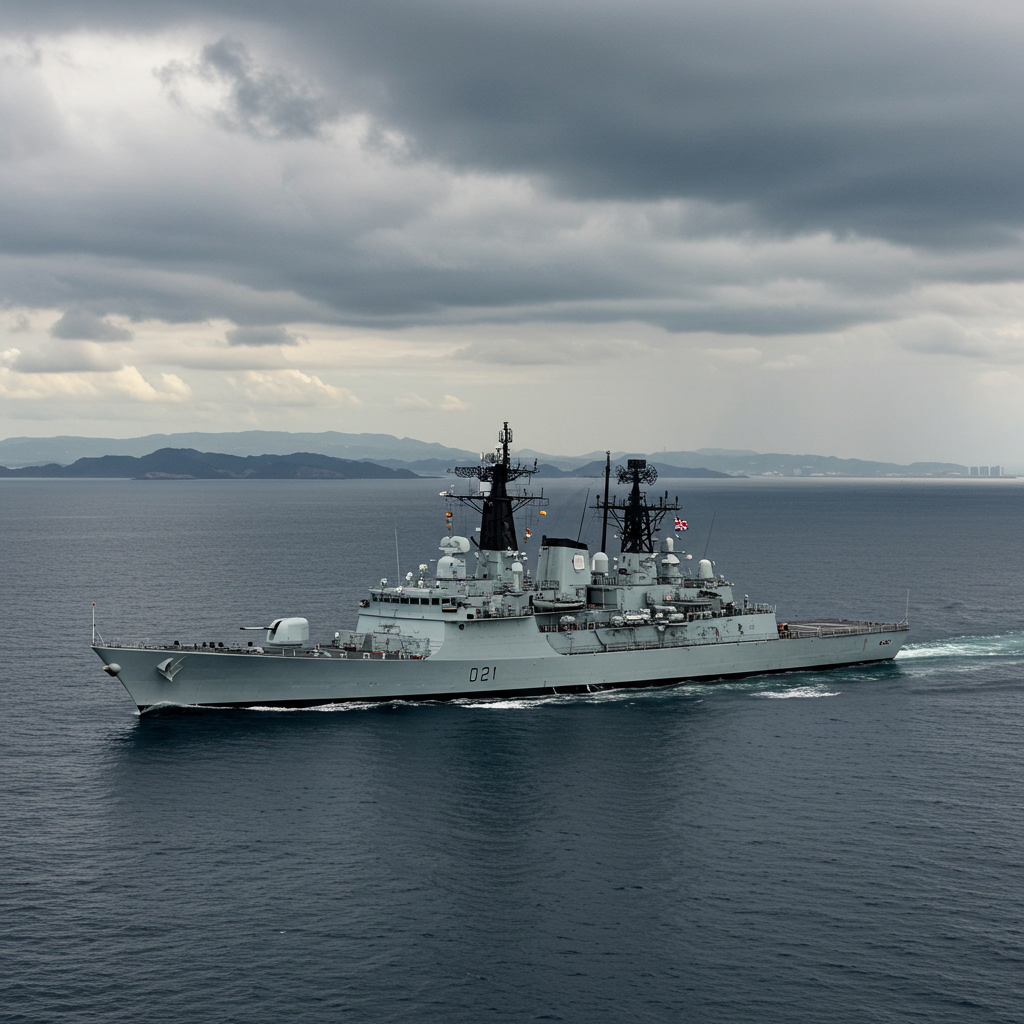Taiwan Strait Tensions Escalate as China Condemns British Warship Passage
Beijing has sharply criticised a recent transit by a British warship through the sensitive Taiwan Strait, labelling the passage an “intentional provocation” that disrupts regional peace and stability. The incident underscores the simmering tensions surrounding the waterway, which China claims as its territory while the UK and its allies assert it is an international area open to navigation.
China’s military, specifically the Eastern Theatre Command of the People’s Liberation Army (PLA), stated that the UK Royal Navy patrol ship, HMS Spey, sailed through the strait on Wednesday, June 18, 2025. Senior Colonel Liu Runke, a PLA spokesperson, condemned the UK for “publicly hyping up” the transit and accused London of “a distortion of legal principles and an attempt to mislead the public.” China asserted that its forces monitored the HMS Spey throughout its journey and are prepared to “resolutely counter all threats and provocations.”
In contrast, the British Royal Navy maintained that the HMS Spey’s patrol was a routine navigation conducted as part of a pre-planned deployment. London emphasized that the passage was carried out in full accordance with international law, including the United Nations Convention on the Law of the Sea (UNCLOS).
Meanwhile, Taiwan’s foreign ministry welcomed the British warship’s action, praising it as a move that helped safeguard the crucial freedom of navigation in the strait. Taiwan views such transits as a strong affirmation of the international waters status of the Taiwan Strait, a view shared by many nations, including the United States, which regularly conducts its own transits.
A Strategic Passage Amidst Growing UK Presence
The transit by HMS Spey marks the first time a British naval vessel has navigated the Taiwan Strait in four years, the last being HMS Richmond in 2021, which also drew condemnation from Beijing. However, the presence of foreign warships in the strait is not uncommon, with US Navy vessels conducting similar freedom of navigation operations approximately every two weeks.
HMS Spey is one of two British offshore patrol vessels permanently stationed in the Indo-Pacific region since late 2021, signalling the UK’s increased commitment to the area’s security dynamics. These vessels play a role in asserting international maritime law across contentious waterways. Earlier this year, HMS Spey also conducted a freedom of navigation exercise in the South China Sea, explicitly challenging China’s sweeping territorial claims based on historical rights, which were largely rejected by a 2016 international tribunal. The warship also participates in multilateral exercises, such as the recent Bersama Shield drill alongside forces from Australia, Malaysia, New Zealand, and Singapore.
The HMS Spey’s Taiwan Strait passage occurs as a larger UK carrier strike group, led by the new aircraft carrier HMS Prince of Wales, arrives in the Indo-Pacific for an extensive eight-month deployment involving around 4,000 military personnel. British Prime Minister Keir Starmer has described this as one of the carrier’s largest deployments this century, aimed at sending “a clear message of strength to our adversaries, and a message of unity and purpose to our allies.” The strike group plans to engage with 30 countries and conduct exercises with key partners like the US, India, Singapore, and Malaysia.
Regional Flashpoints Intensify
The recent UK transit and China’s angry reaction are set against a backdrop of significantly heightened cross-strait tensions between Beijing and Taipei. Since the inauguration of Taiwanese President Lai Ching-te, who champions a firm anti-Beijing stance, tensions have increased. President Lai has characterised Beijing as a “foreign hostile force” and implemented policies to counter Chinese influence operations in Taiwan.
China, which considers Taiwan a renegade province to be “reunified” by force if necessary, continues frequent military exercises in the Taiwan Strait. These drills have included live-fire exercises simulating strikes on key infrastructure.
Adding to the regional complexity, China recently conducted an unprecedented simultaneous military drill involving both its aircraft carriers, the Liaoning and the Shandong, in the Pacific waters off Japan. This exercise, which included hundreds of fighter jet and helicopter operations and reportedly saw Chinese jets making “abnormal approaches” to Japanese surveillance aircraft, has caused significant alarm in Tokyo, prompting a formal protest and public disclosure of the Chinese carriers’ movements. Analysts suggest such large-scale drills may be testing the resilience of regional alliances like the US-Japan security pact.
This military activity unfolds as British Prime Minister Keir Starmer is reportedly scheduled to visit Beijing later in June 2025, which would mark the first visit by a British leader since 2018, potentially adding a diplomatic layer to the current military posturing.
The HMS Spey’s passage, while defended by the UK as a routine exercise of international rights, serves as a stark reminder of the competing claims and increasing military presence in the Taiwan Strait and the broader Indo-Pacific region, fueling concerns about regional stability.




